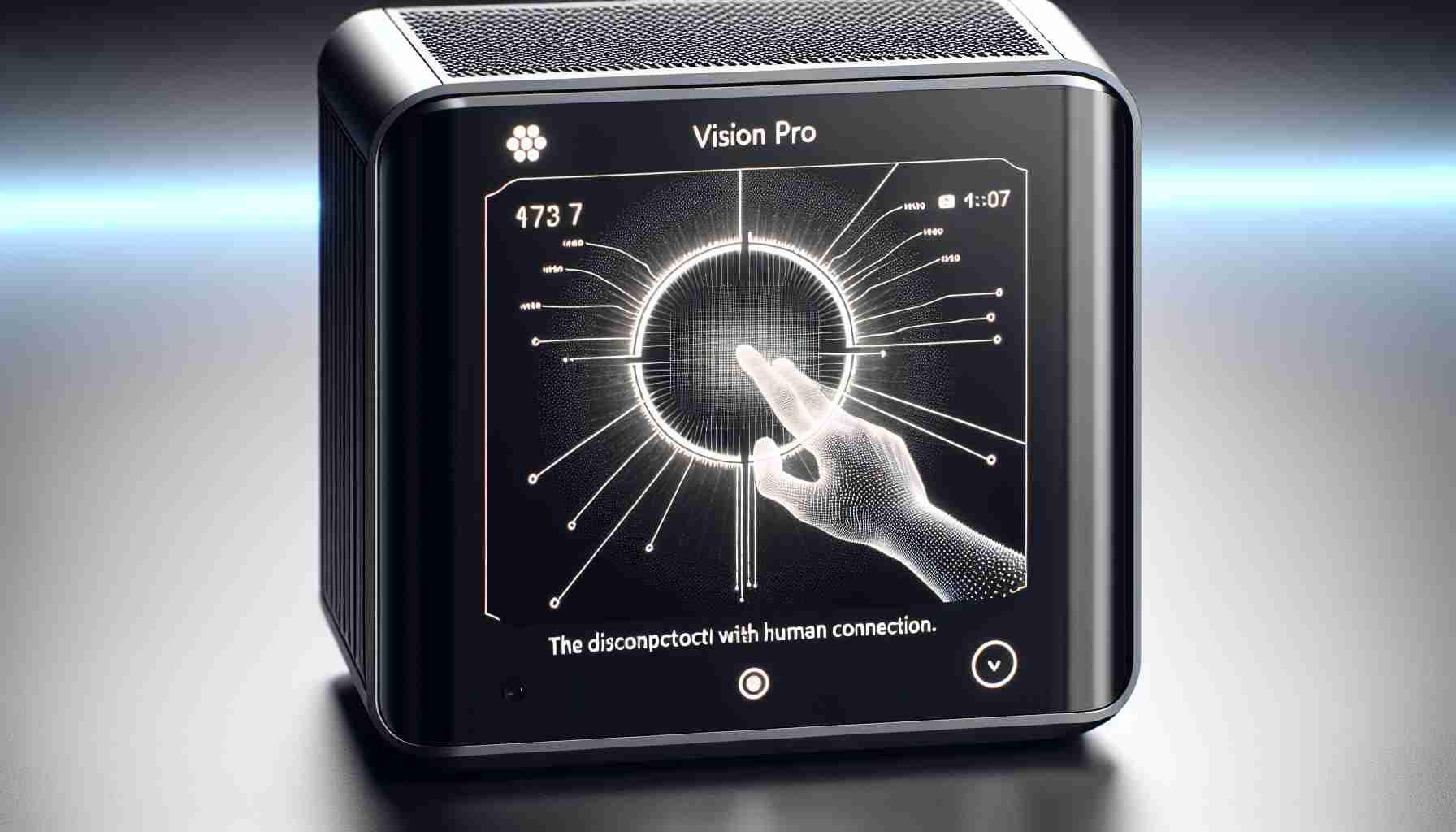Apple’s recent release of the Vision Pro has garnered attention for its impressive technical features, but there is one element that stands out the most: EyeSight. This function displays a digital rendering of your eyes on the device’s front screen, mimicking eye contact with the audience. However, the question remains: can a digital facsimile truly replace the connection we feel when making real eye contact?
While Apple hopes that EyeSight can fool our lizard brains and keep us connected to the world, the truth is that this virtual interaction falls short. When we are absorbed in a regular screen, it is evident to those around us that our attention is divided. Even children can tell when they are not receiving our full attention. The Vision Pro takes this disconnect to a whole new level. Engaging in a conversation with someone wearing the device, while they look through you to their digital world, will never feel like a genuine human interaction.
Apple’s promotional trailer for the Vision Pro illustrates this disconnect vividly. A father wearing the device interacts with his children, but there is a noticeable barrier between them. He sits at a distance, half of his face concealed, while they play and attempt to include the digital presence of their father. It is a portrayal of incomplete connection, highlighting the limitations of virtual interaction.
This disconnect extends beyond personal relationships and raises questions about the device’s suitability for social and collaborative work environments. Can you tap someone on the shoulder to get their attention when they are engrossed in a digital world? How do you navigate power dynamics when communicating with someone wearing the Vision Pro? The artificial nature of this interaction presents challenges for effective communication and understanding.
While Apple’s long-term plan for the Vision Pro may involve advancements that mimic normal glasses, the fundamental issue of divided attention and inadequate human connection remains. Whether it’s requesting a raise, making a sale, or delivering sensitive news, the use of Vision Pro and its digital avatars introduces a layer of abstraction that hinders genuine interaction.
In conclusion, Apple’s Vision Pro may be a technological marvel, but it fails to bridge the gap in human connection. Virtual interactions, no matter how advanced, cannot replace the authenticity and depth of face-to-face communication. While the device may have practical uses for certain tasks, its impact on personal relationships and effective communication in various settings poses significant challenges.
Frequently Asked Questions (FAQ) about Apple’s Vision Pro:
1. What is the standout feature of Apple’s Vision Pro?
The standout feature of Apple’s Vision Pro is EyeSight, which displays a digital rendering of your eyes on the device’s front screen, mimicking eye contact with the audience.
2. Can a digital facsimile truly replace the connection we feel with real eye contact?
No, virtual interaction through the Vision Pro falls short of replicating the genuine human connection experienced with real eye contact.
3. How does using the Vision Pro affect personal relationships?
Using the Vision Pro introduces a noticeable disconnect and incomplete connection between individuals. The device’s digital presence can hinder genuine interactions and diminish the depth of personal relationships.
4. What challenges does the Vision Pro present in social and collaborative work environments?
The Vision Pro poses challenges for effective communication and understanding in social and collaborative work environments. It becomes difficult to get someone’s attention when engrossed in the digital world, and power dynamics may be unclear when communicating with someone wearing the device.
5. Does Apple have future plans to address the limitations of the Vision Pro?
While Apple’s long-term plans for the Vision Pro may involve advancements that mimic normal glasses, the fundamental issues of divided attention and inadequate human connection remain, posing challenges to genuine interaction.
6. Can virtual interactions replace face-to-face communication?
No matter how advanced virtual interactions become, they cannot replace the authenticity and depth of face-to-face communication. The Vision Pro, despite its technological marvel, fails to bridge the gap in human connection.
Related links:
– Apple
The source of the article is from the blog guambia.com.uy
